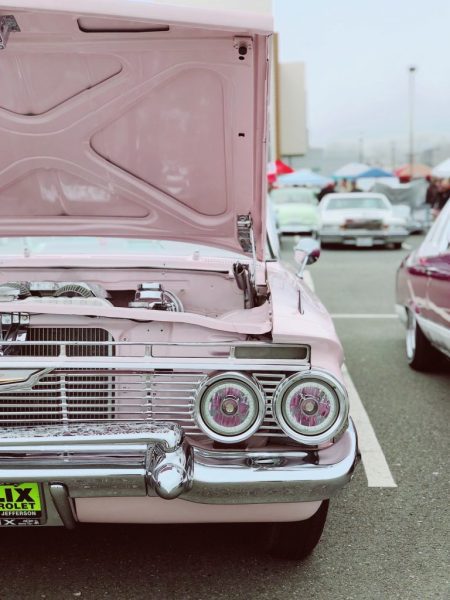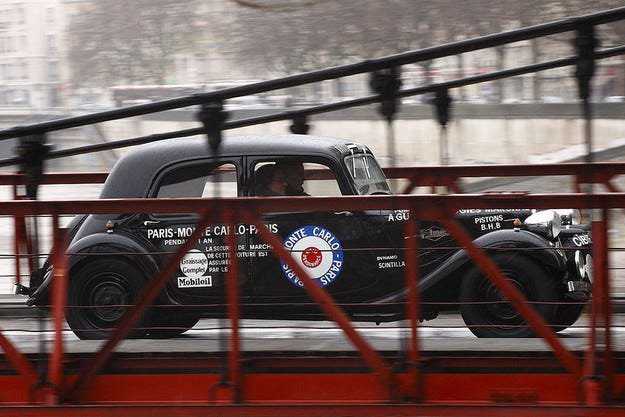
What do you need to take care of when your car surpasses the 100 XNUMX mark? km?
Content
100 thousand km is a magical barrier for many car components, after which they must be replaced. This will help you avoid breakdowns while driving and prevent potential loss of driving control. In theory, every driver knows that high-quality fuel and periodic replacement of components keep the car in good condition, but in practice everything can be different. If these two aspects have been neglected so far, such a course may be the last moment to care for important parts so as not to risk a traffic accident or engine seizure.
Shortly speaking
There is nothing to hide - 100 thousand. km there is something to repair in each car. It's time to replace the tires, brake disc and pads, battery, V-belt, timing system components, and fuel and air filters. In diesels, the list of things that are already heavily used up is expanded to include a DPF filter, glow plugs, and even a turbine, injectors and a dual-mass flywheel. Spark plugs and high voltage cables should be worn out in a regular gas tank. However, in vehicles with a turbocharged engine, the turbine, intercooler, some sensors, starter, alternator and dual mass flywheel should be checked.
Replace these things in the car for 100 thousand km, regardless of the type of engine
Brake discs and pads
100 thousand km is the maximum time during which the brake discs can work reliably. For the last few year s they are minimally erased with each braking – just like brake pads – and the more dynamic your driving style, the faster their wear progresses. It's time to replace them.
battery
The new battery works well for several years after purchase... That's how long it usually takes 100 km, so when the car reaches that mileage, it's worth replacing the battery.
Timing belt, timing chain and accessories
The risk of belt breakage increases after exceeding 100 thousand. km, even when the manufacturers promise to withstand another 50 km. – its consumption does not cause symptoms that could be noticed while driving. It also happens that the failure occurs much faster. So check it out on the site. Or, if it has not yet been replaced, immediately leave this task to the mechanic. When you miss the right moment the belt will break and most likely damage the engine... By the way, it may be necessary to replace other components accompanying the timing belt, for example, a water pump.
V-belt
The V-belt is a rubber element that, among other things, drives the generator and the coolant pump, which gradually wears out during movement. Like other components of the car, it is indicated by the manufacturer. endurance that starts from 30 thousand. km... If its surface has holes, scuffs, cracks or pieces of rubber, this is the last moment to replace it. Broken Belt can get into the timing system and damage it... Even if this black scenario doesn't work, stop the car and call a tow truck to avoid the risk of engine jamming. Ultimately, if the belt isn't driving the coolant pump, you can turn off any unnecessary receivers like a radio or GPS and count on enough power to drive a few miles to the nearest garage.
Air and fuel filters
The air filter is an important barrier to dirt getting into the engine compartment. This extends the life of the engine and associated components. Ingress of dust will damage the surfaces of pistons, piston rings and cylinders and, as a result, accelerate engine wear. Depending on the manufacturer's recommendations, the air filter is replaced after 20-40 thousand. km, so it's probably time to replace it. Manufacturers promise to replace the fuel filter every 100 km, as a rule, does not coincide with reality. Of course, its durability is determined by the type and purity of the fuel, but the quality of the filter itself largely influences this. A clogged filter will not clean the fuel, weaken or interfere with the operation of the engine, and even lead to failure of the injectors and injection pump..

Tires
Aggressive driving style affects the condition of the tires no less than their age. If you drive quietly, you only need to change them once every 100 km. On the other hand, if you're cruising the streets more dynamically, you should have invested in a new set a long time ago. A worn tire gags, cracks, delaminates and loses elasticity.. Do you have unused but old tires in your garage? Unfortunately, they cannot be used - it is believed that after 5 years any rubber, even if not worn, loses its properties. In addition, if stored incorrectly, they are deformed.
List of things that need to be replaced after 100 km in diesel
If you have a diesel car, 100 km, there may be costs associated with replacing items such as:
- turbine - although it is supposed to remain reliable throughout the life of the engine, often already 50 thousand km each must be replacedmainly due to refueling with low-quality fuel;
- injectors - if the fuel was poor quality and you neglected the regular replacement of the fuel filter, the injectors will probably need to be replaced, although if you are lucky, they can still be regenerated;
- dual-mass flywheel - replacement will be necessary, especially when you can hardly leave the city, and for this You alternately brake and accelerate sharply;
- glow plugs - after all, their service life is estimated at exactly 100 thousand km;
- DPF filter - it needs to be replaced if the car was used mainly for short distances, if for long distances - it may be enough to simply check.
List of things that need to be replaced after 100 km in a car with a gasoline engine
A car with a gasoline engine is also not without additional costs, but there are not so many of them. Here's what you may need to replace after 100 kilometers. km:
- high-voltage wires in the ignition system - 100 thousand km they could be damaged;
- Spark plug - factory candles, as a rule, are enough for 30 km of runso you will probably have to replace them soon.
However, in the case of a turbocharged car, according to the downsizing guidelines, the list of things to replace is a little longer. Some parts may have been worn out, for example turbine, intercooler, some sensors, starter or generator. And sometimes a dual-mass flywheel - for the same reasons as in cars with a diesel engine.
As you can see, no matter what engine your car has, 100 km some parts will have to be regenerated or replaced. When ordering the appropriate repair, do not forget about changing the working fluids - these and other components that are important for a serene ride can be found on the website avtotachki.com.
Do you want your car to always be in perfect condition? Check out our other entries:
When to change shock absorbers?
Oil channels clogged - look at the danger!
Fluctuating engine speed. What is it and how do I fix it?

